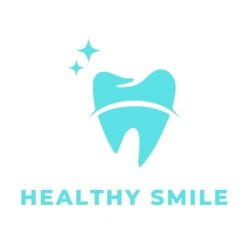Welcome to our comprehensive guide on composite bonding, where we dispel common myths and unveil the truth about this transformative dental procedure. If you’re considering composite bonding or simply want to enhance your knowledge, this article is for you. As a trusted and authorized content provider, we’re here to offer you invaluable insights that will help you make informed decisions about your dental health. So, without further ado, let’s bust some myths about composite bonding.
Myth 1: Composite Bonding is Painful Fact: It’s Virtually Painless
One of the most common fears patients voice to their Private Dentist in Telford is the perceived pain associated with composite bonding. In reality, composite bonding, especially when performed in reputable clinics offering Composite Bonding in Telford, is typically a painless experience. The process mainly focuses on shaping and bonding without digging deep into the tooth’s structure. Occasionally, a local anesthetic might be used, but in most cases, it’s not necessary.
Myth 2: Composite Bonding is Only for Aesthetics Fact: It Offers Both Aesthetic and Functional Benefits
While composite bonding is indeed famous for its cosmetic benefits, such as fixing chipped, discolored, or misshapen teeth, it also serves a functional purpose. Dental composite material is versatile and can be used to repair minor dental issues, including small cavities and fractures. Additionally, it can improve the strength and durability of your teeth, ensuring that your smile remains not just beautiful but also healthy.
Myth 3: Composite Bonding Requires Extensive Tooth Reduction Fact: Minimal Tooth Reduction is Needed
Many people fear that composite bonding involves significant tooth reduction, which can weaken their teeth. In reality, this myth couldn’t be further from the truth. Composite bonding is a conservative treatment that requires only minimal tooth reduction, if any at all. Your dentist will ensure that the procedure preserves the natural structure of your teeth as much as possible, making it a safe and effective way to enhance your smile.
Myth 4: Composite Bonding Doesn’t Last Long Fact: It Can Be Durable and Long-Lasting
There’s a misconception that composite bonding is a temporary fix, requiring frequent touch-ups. While the longevity of composite bonding can vary from person to person, it is possible for it to last for several years with proper care. Maintaining good oral hygiene practices, such as regular brushing, flossing, and dental check-ups, will contribute to the durability of your composite bonding. The composite material used is designed to withstand the daily wear and tear of eating, speaking, and smiling.
Myth 5: Composite Bonding is Incredibly Expensive Fact: It Can Be Cost-Effective
Some individuals assume that composite bonding is an expensive cosmetic dental treatment. The cost of composite bonding can indeed vary depending on factors such as the complexity of the procedure, the number of teeth involved, and the location of the dental practice. However, when compared to more extensive dental treatments, composite bonding is often a cost-effective solution to enhance your smile. It provides significant cosmetic and functional benefits without breaking the bank.
In conclusion, composite bonding is a versatile and minimally invasive dental procedure that can address both cosmetic and functional concerns. It is not painful, minimizes tooth reduction, offers lasting results, and can be a budget-friendly option for those seeking to improve their smiles. By busting these common myths, we hope to empower you with the knowledge needed to make informed decisions about your dental health.
If you’re considering composite bonding in the UK, consult with a trusted and authorized dentist who can guide you through the process and help you achieve the smile you’ve always desired. Remember, your smile is an investment, and with the right information, you can make the best choice for your oral health and aesthetics.





